This post may contain affiliate links. Please read our disclosure policy. As an Amazon Associate, I earn from qualifying purchases.
Homemade ricotta cheese is one of those recipes that’s way easier than it looks, and it blows the store-bought stuff out of the water. All you need is good milk, a splash of vinegar or lemon juice, and a little patience.
The result? Rich, fluffy curds that actually taste like dairy instead of bland filler. Use it in everything from desserts to my cheese manicotti that’s basically a hug in pasta form.
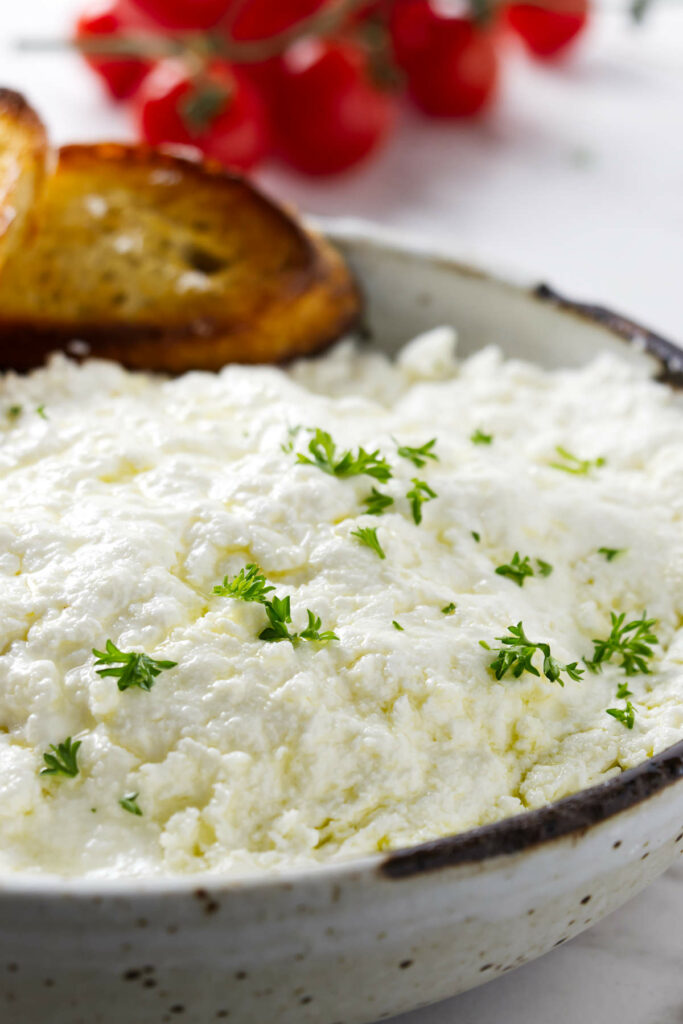
Here’s Why This Homemade Ricotta Cheese Recipe Works
Simple ingredients, big payoff: You only need four pantry staples to make creamy, fresh ricotta that puts the plastic-tub version to shame.
No fancy tools required: A pot, a thermometer, and some cheesecloth (or a clean towel) are all you need to make this from-scratch cheese.
Customizable texture: Want it silky? Drain it less. Prefer it crumbly for baking? Let it sit longer. You’re in control, and perfect texture is key for things like this whipped ricotta dip.
Better flavor, every time: Holding the curds at a warm temperature for 20 minutes deepens the flavor and gives you that real-deal ricotta vibe.
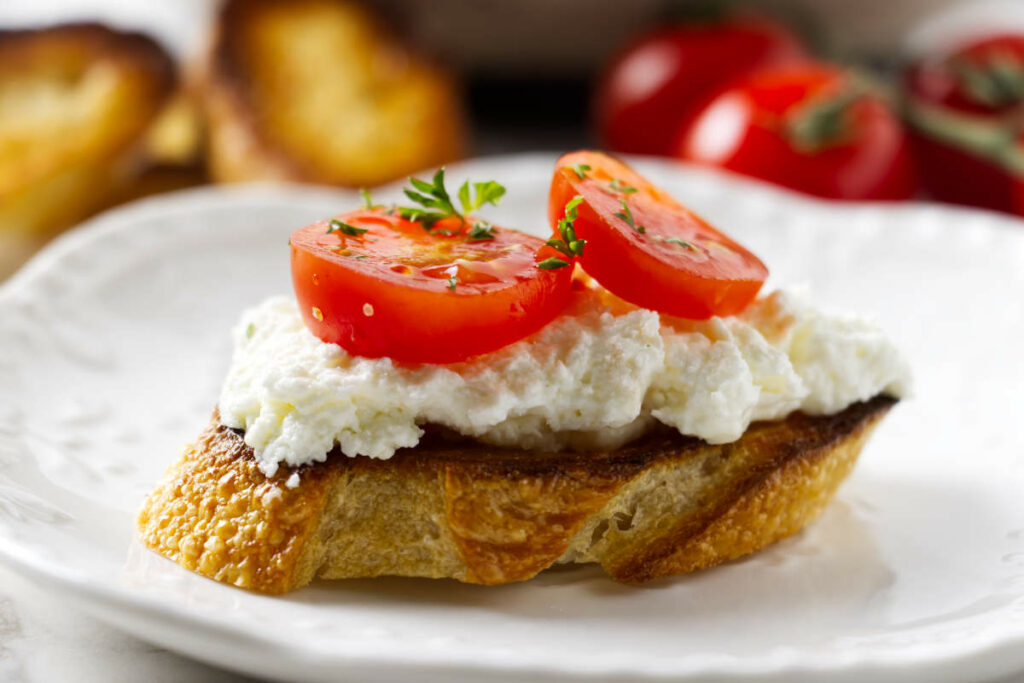
Recipe Tips
Avoid ultra-pasteurized milk: High-temp processing messes with the proteins, so it won’t curdle properly or separate into curds and whey.
Slow and steady heat: Keep it low and gentle. Scorching milk is the fastest way to ruin your homemade cheese.
Hold the heat: That 20-minute hold between 175–185°F? Don’t skip it, it boosts flavor and fluffiness.
Scoop, don’t pour: Use a slotted spoon to transfer the curds. Dumping the whole pot into a strainer will clog things fast.
Drain fully to use in recipes: If you’re using your ricotta in something like my malfatti dumplings or my sourdough ricotta pancakes, let it drain longer so the mixture holds together without getting watery.
Taste after draining: Once it’s drained, you can stir in a bit more salt if needed or cream if you want an extra creamy texture.
Storing Leftovers
Refrigerate: Transfer the fresh ricotta cheese to an airtight container and keep it in the fridge for up to 5 days. It’ll firm up a bit as it sits, which is great for cooking.
Freeze: Technically possible, but not ideal. Frozen ricotta tends to get grainy and lose its creamy texture. If you must, use thawed ricotta in baked dishes where texture matters less.
Using leftovers? Turn it into this baked ricotta dip or use it to make my ricotta mashed potatoes and thank yourself later.
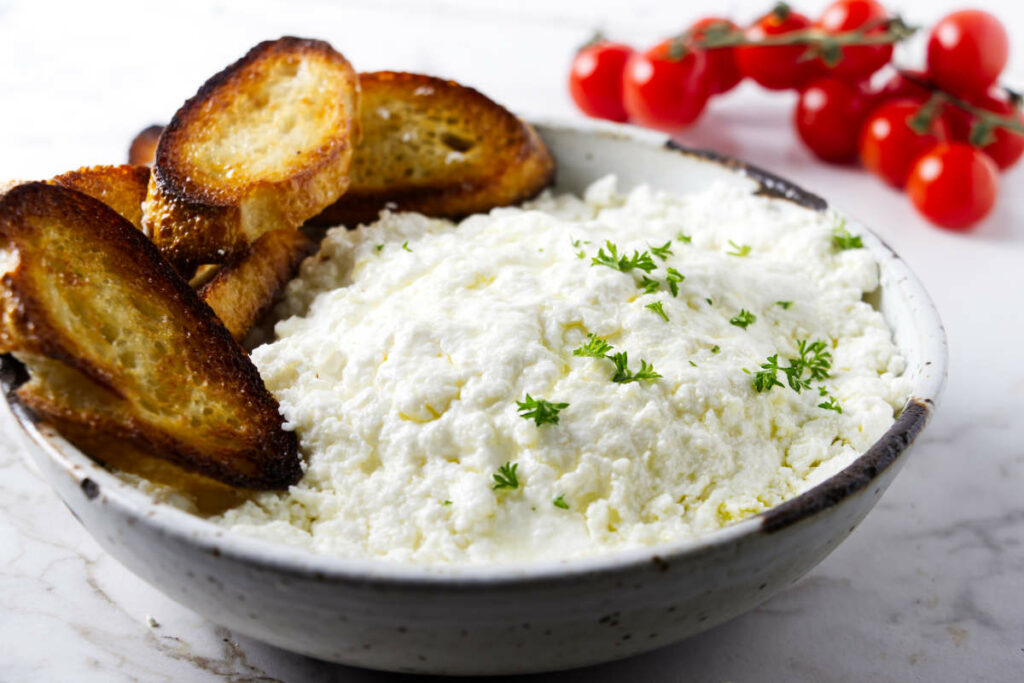
Fresh Ricotta Cheese
Once you make homemade ricotta, there’s no going back to the bland, filler-packed tubs at the store. This version is creamy, fresh, and ridiculously satisfying to make. No gums, no stabilizers, just real dairy doing its thing.
Now go make some homemade ricotta gnocchi!
Pin this now to find it later!
Pin It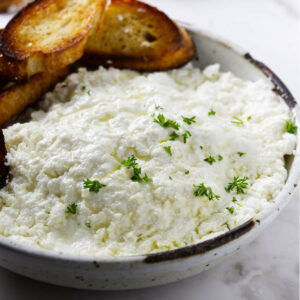
Homemade Fresh Ricotta Cheese
If you make this recipe, please leave a star rating and comment.
Ingredients
- 8 cups whole milk, not ultra-pasteurized
- ¼ cup heavy cream, optional, for a richer texture
- 1 teaspoon salt
- 3 to 4 tablespoons distilled white vinegar , or lemon juice
Instructions
- In a large pot, combine the milk, cream (if using), and salt. Set over medium-low heat and slowly warm to between 185°F and 190°F, stirring occasionally to avoid scorching.
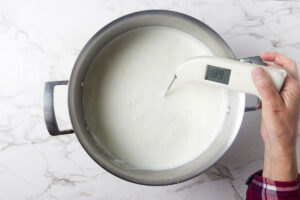
- Once the milk reaches temperature, gently stir in the vinegar or lemon juice. Curds should start forming right away. Start with the smaller amount, and add more only if curds don’t form.
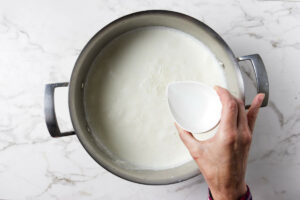
- Lower the heat as needed to maintain a temp between 175 to 185°F and hold it there for 20 minutes. Don’t stir, just let the curds set and develop flavor.

- Use a slotted spoon to gently lift the curds into a cheesecloth-lined sieve set over a bowl (you can use a thin dish towel if you don’t have cheesecloth). Let the ricotta drain for 10 to 30 minutes, depending on your preferred texture (shorter for creamy, longer for drier ricotta).
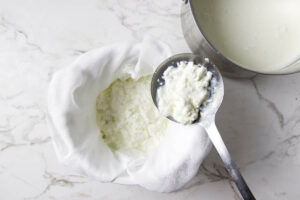
- If desired, stir in a pinch more salt or a splash of cream after draining for extra richness.
Notes
Nutrition
Nutrition information is automatically calculated, so should only be used as an approximation.
 Like this recipe? Rate & comment below!
Like this recipe? Rate & comment below!
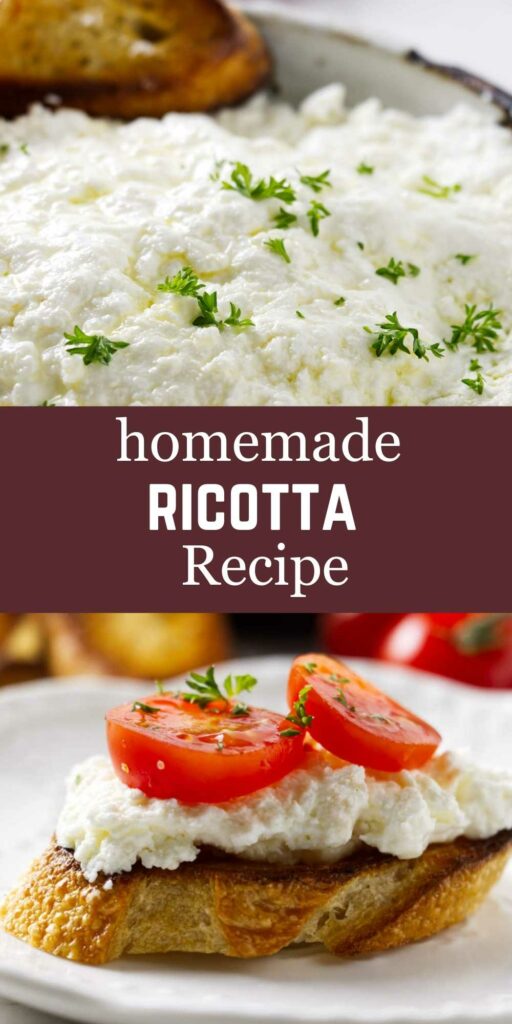
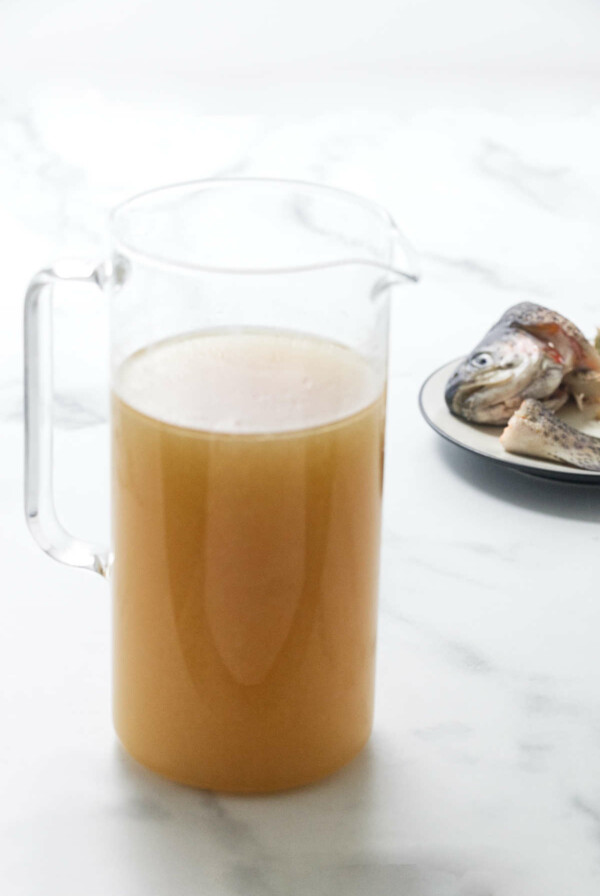

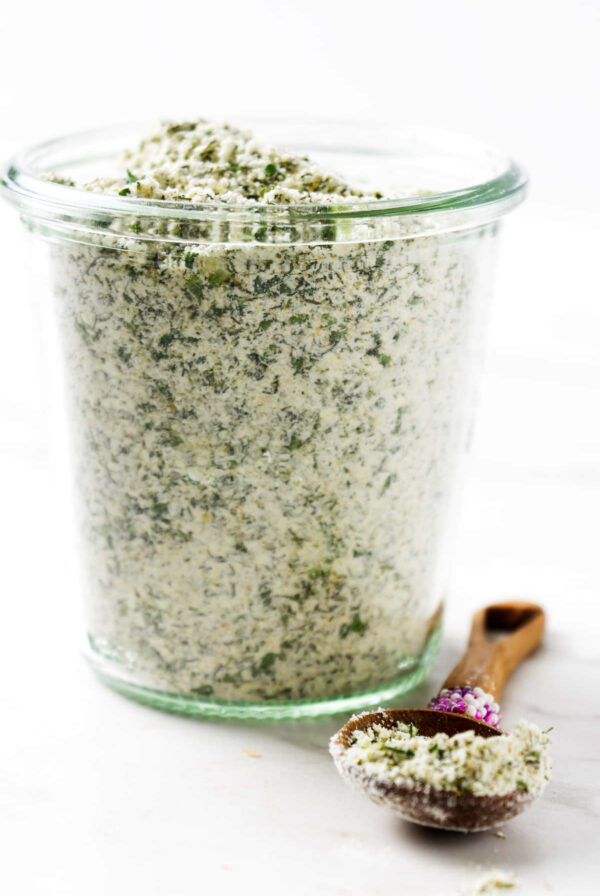











What is the “yield” from this recipe? You write it makes 6 servings but do not specify the size of those servings, and the total amount produced is needed in order to use this recipe to prepare for some of your other ones that use ricotta cheese, such as the stuffed manicotti.
You’re right—thanks for pointing that out! This recipe makes about 2 to 2 ½ cups of ricotta. I listed it as 6 servings, but the actual yield is the more useful detail. I’ll update the post so it’s easier to reference. Thanks for the comment.